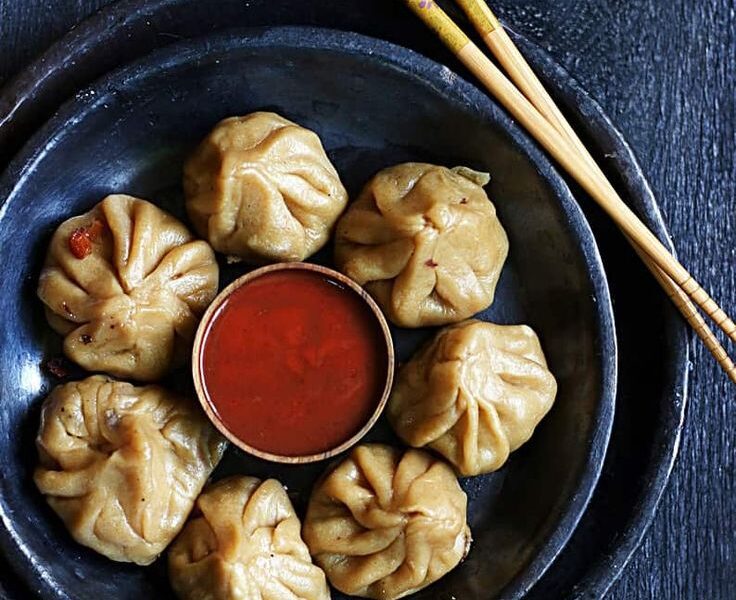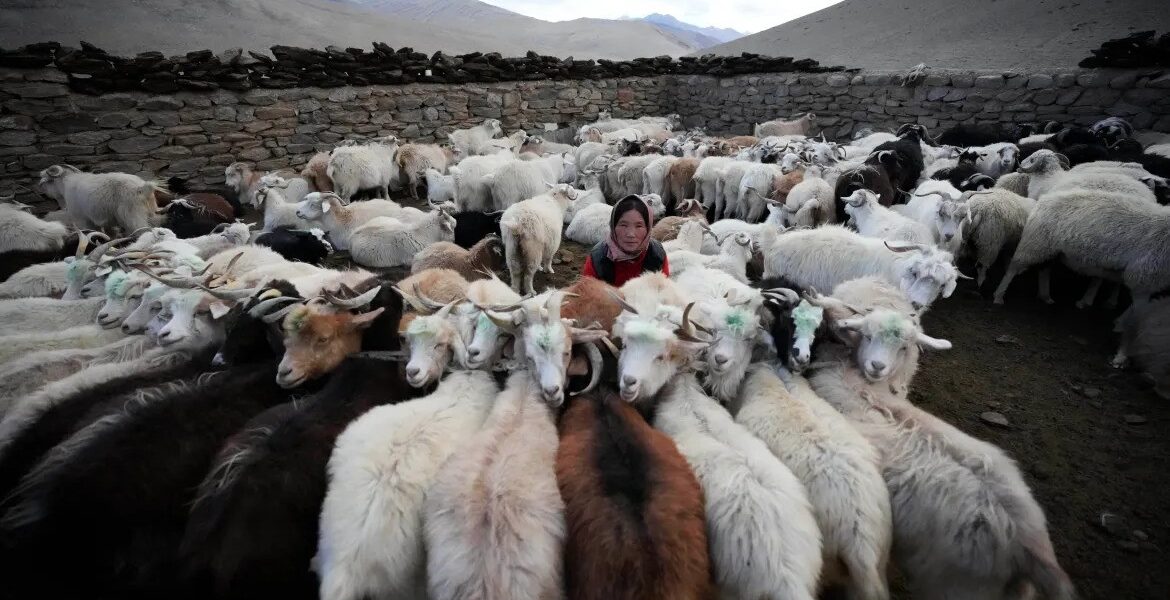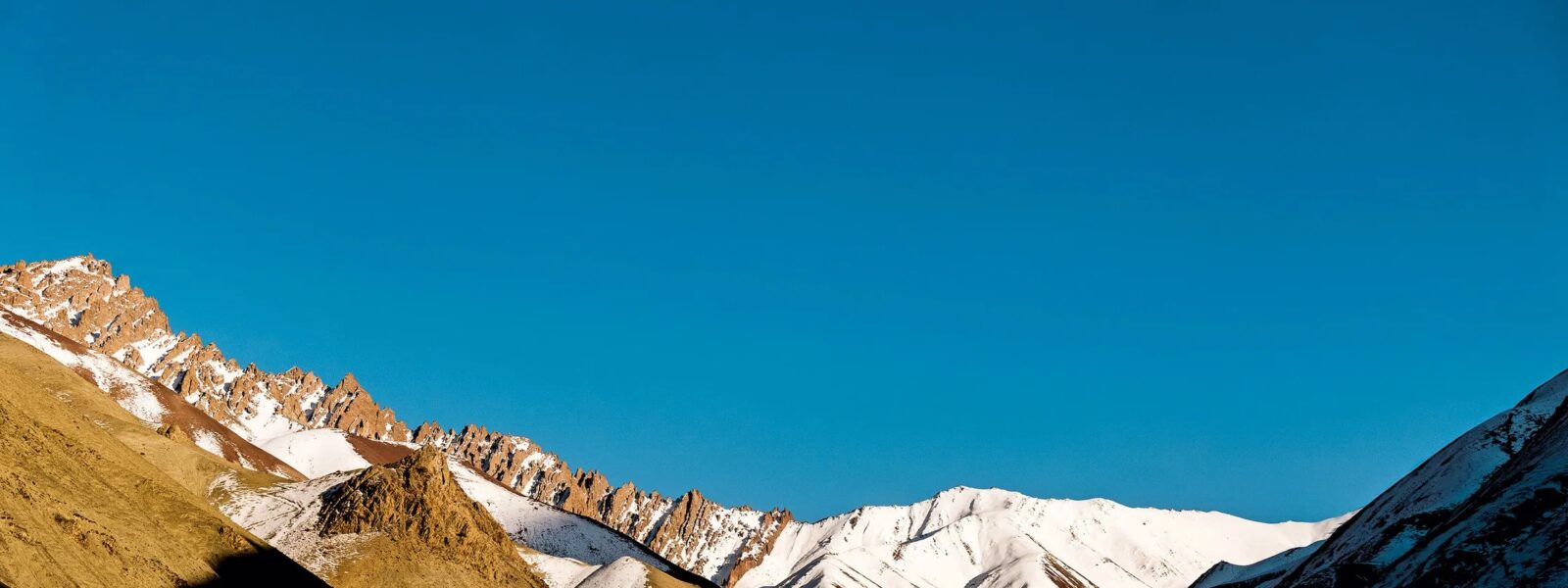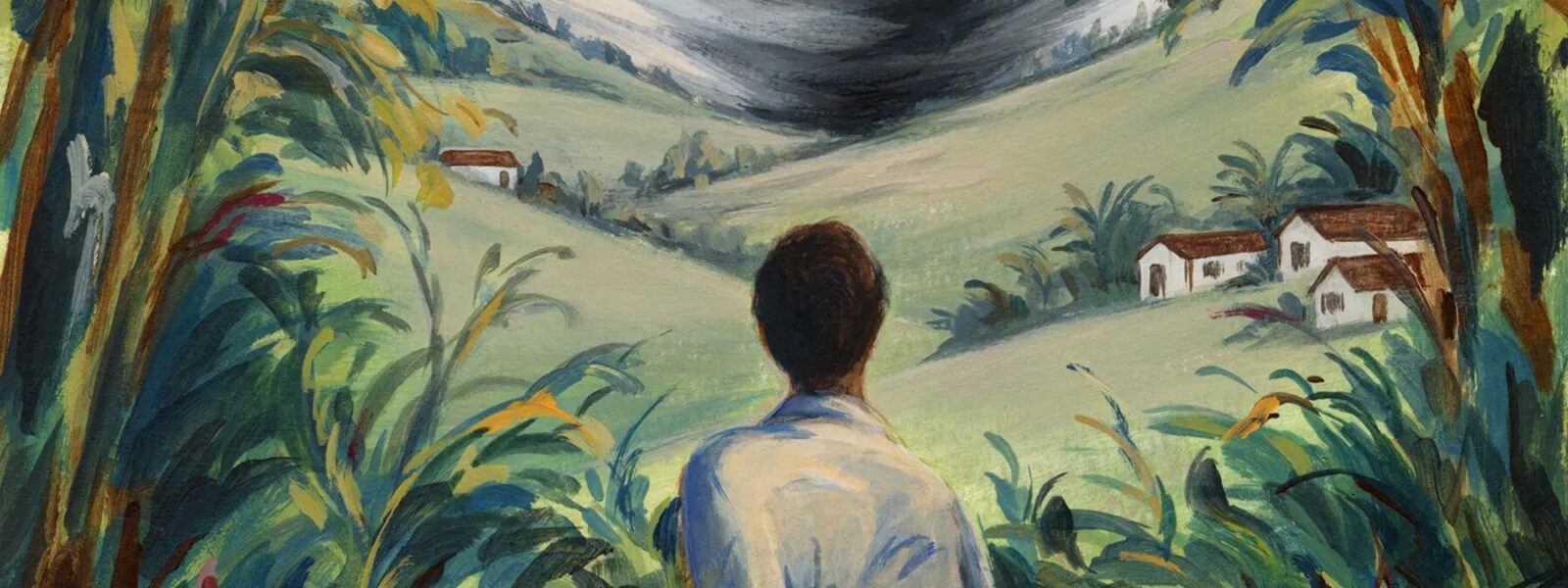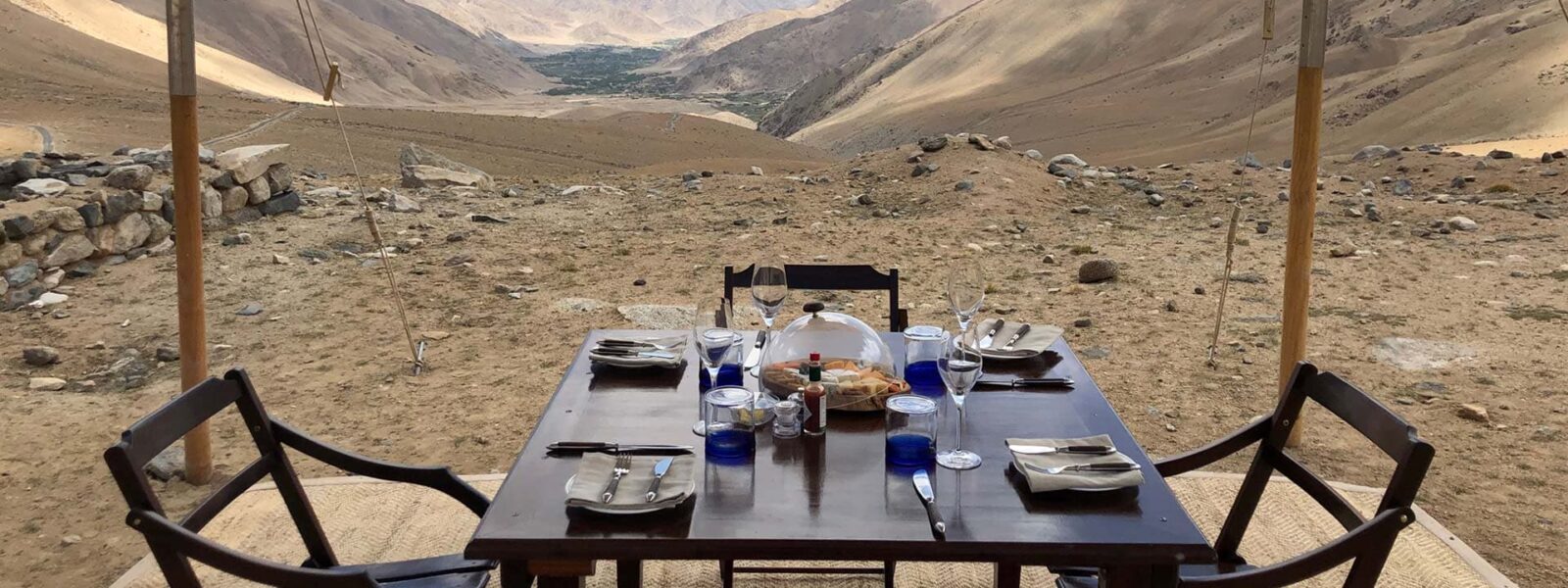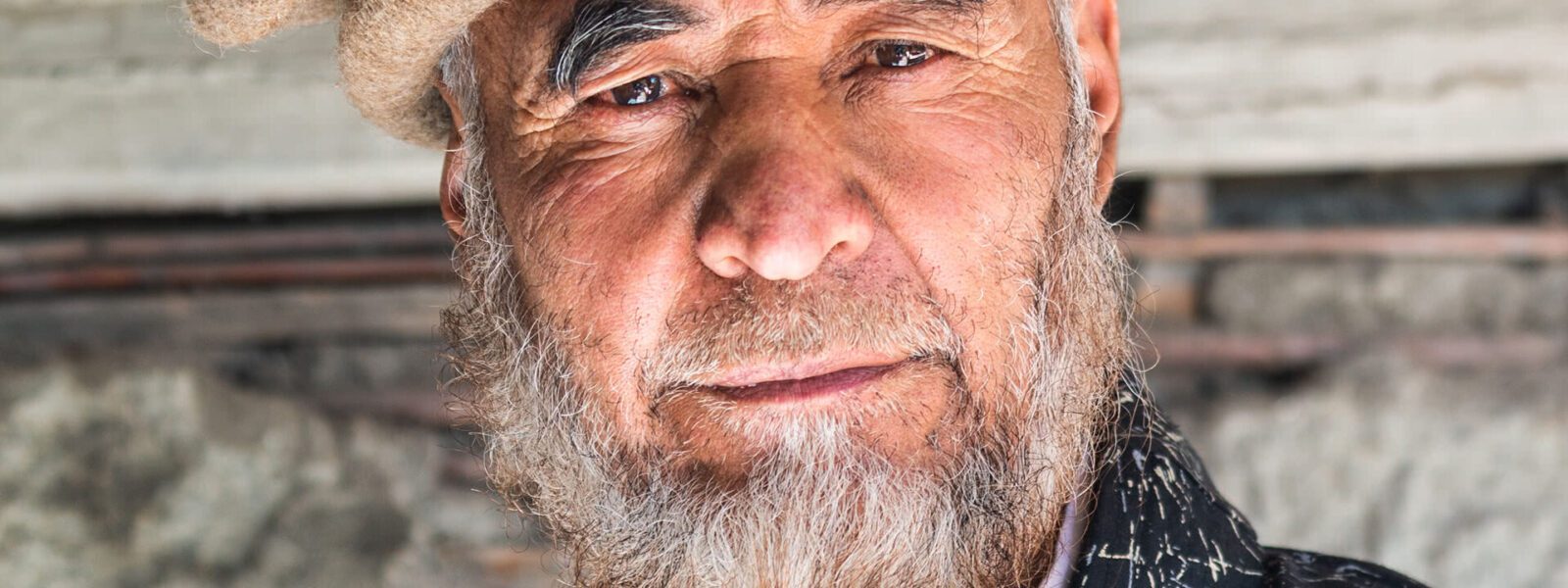Where Fields Touch the Sky – Buckwheat, Barley, and Earth
Somewhere beyond the dust of Leh’s narrow streets and the distant shimmer of stupas, the land begins to breathe differently. Here, in the heart of the Himalayas, fields of buckwheat and barley stretch toward an impossibly vast sky, brushed by winds that have crossed mountains older than memory itself.
It is said that in Ladakh, grain is more than nourishment; it is identity. Walking through the village of Tegar during harvest season, I found myself lost in a landscape that felt both raw and deeply sacred. Women in jewel-toned gonchas worked methodically among rows of golden barley, their laughter punctuating the crisp autumn air. Their hands moved in rhythms passed down for generations, weaving an unspoken bond between earth and culture.
In this high-altitude desert, where farming is a negotiation with the sky itself, two grains reign supreme: phapar (buckwheat) and naked barley. Both resilient and rich in nutrients, they are not just crops; they are the cornerstone of Ladakh’s food culture. The nutty aroma of freshly roasted tsampa (barley flour) often drifts from village homes, a scent as comforting as a mother’s embrace. With water scarce and winters brutal, these ancient grains are life distilled into its purest form.
I watched a farmer toss handfuls of buckwheat into the air, separating seed from chaff with a dance-like grace. He told me, through a translator, that his family had cultivated these fields for over two hundred years. “Without buckwheat,” he said, “we would not survive.” His smile carried the weight of centuries, of ancestors who had learned how to coax sustenance from stubborn, stony soil.
In Ladakh, the act of eating a simple buckwheat pancake or sipping barley broth is an immersion into history. These flavors are not extravagant, but they are profound. They are shaped by altitude, hardship, and the abiding generosity of nature. Every grain harvested is a small triumph, a love letter from the earth to those resilient enough to live upon it.
As the sun dipped behind the peaks, casting long blue shadows over the fields, I realized that in Ladakh, the landscape is not just scenery — it is sustenance. And by tasting its grains, you begin to understand its soul.
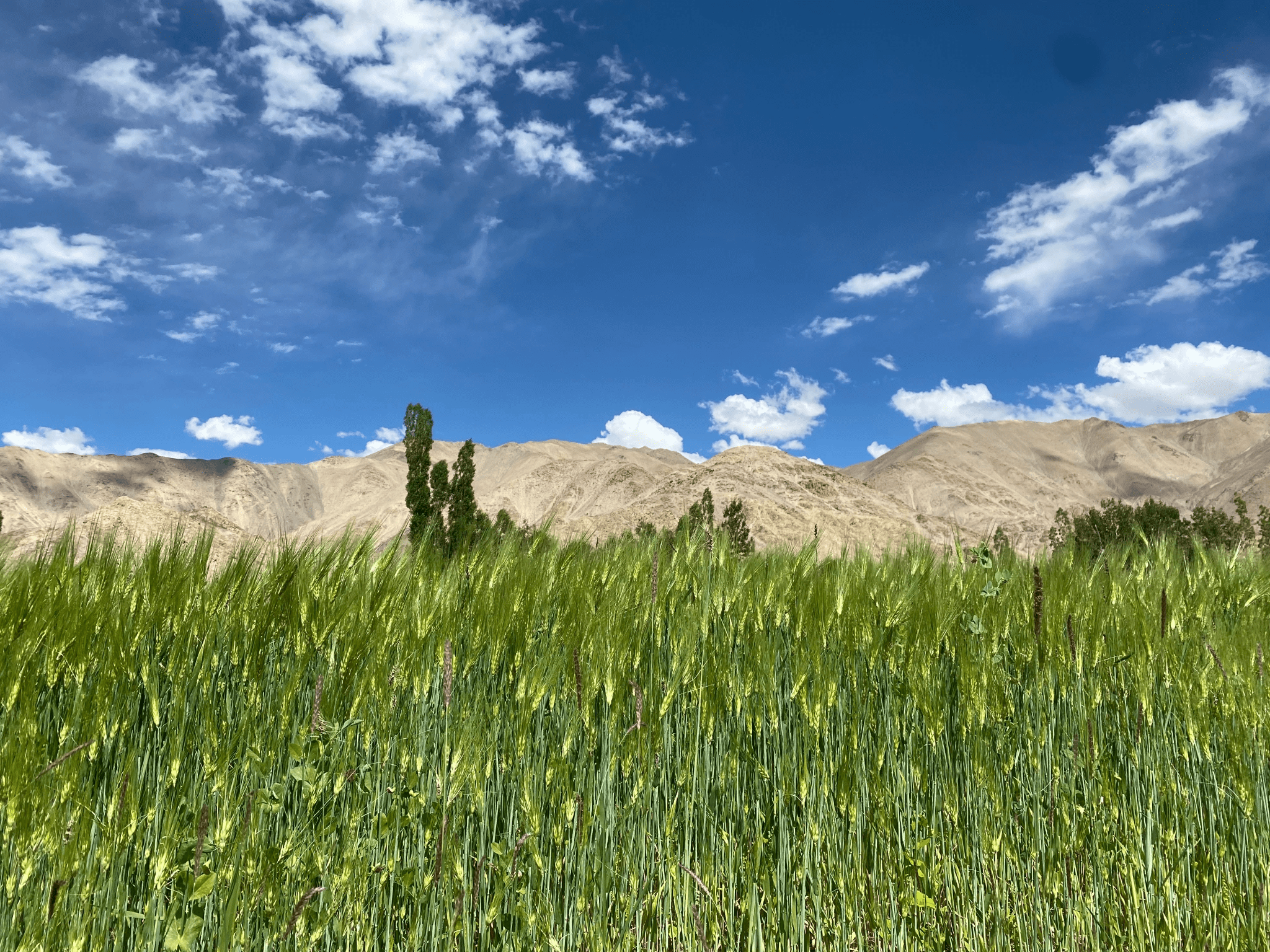
The Hearth of the Home – Simple Meals with Sacred Meaning
In Ladakh, the true heart of a home is not a grand living room or a decorated entrance. It is the kitchen — a warm, smoky space where tradition simmers alongside sustenance. On a chilly evening in the village of Temisgam, I was invited into such a home, and what unfolded remains one of my most cherished memories of the Himalayas.
The family’s kitchen was a modest room, its stone walls stained by years of woodfire smoke. An iron stove sat in the center, fed with slender sticks of poplar. Around it, small brass pots gleamed in the firelight, and the air was fragrant with the comforting scent of barley, butter, and simmering greens. It was not just a place for cooking; it was the pulse of life itself.
As I settled onto a woven rug, the grandmother, her face lined like the mountains outside, began preparing skyu — a traditional Ladakhi pasta stew. With skilled fingers, she pinched small pieces of dough into little dumplings, dropping them into a pot where root vegetables floated. Each movement was unhurried, intentional, almost meditative. Around us, the family spoke in lilting Ladakhi tones, the warmth of their togetherness needing no translation.
Meals here are more than food; they are ceremonies of gratitude. Every dish — whether it be the hearty chutagi (bow-tie pasta soup) or a simple buckwheat flatbread — carries a story, woven into Ladakh’s history of endurance and reverence for nature. There is no pretense, no lavish spread; instead, there is a deep, quiet acknowledgment of the earth’s generosity and the family’s shared labor.
Before eating, a small offering was made — a few drops of broth flicked toward the window, a gesture of thanks to the spirits of the land. Only after honoring the unseen forces could the meal truly begin. As I tasted the skyu, rich with barley and the sweetness of turnips, I felt as if I were swallowing the very essence of the mountains.
In Ladakhi homes, food is never rushed. Conversation flows with the tea; laughter rises like steam. The act of eating is a communal bond, a way of reaffirming that in this rugged land, survival is a shared triumph. As I wiped my bowl clean with a piece of freshly baked bread, I realized: in Ladakh, every meal is a story told in whispers and flavors.
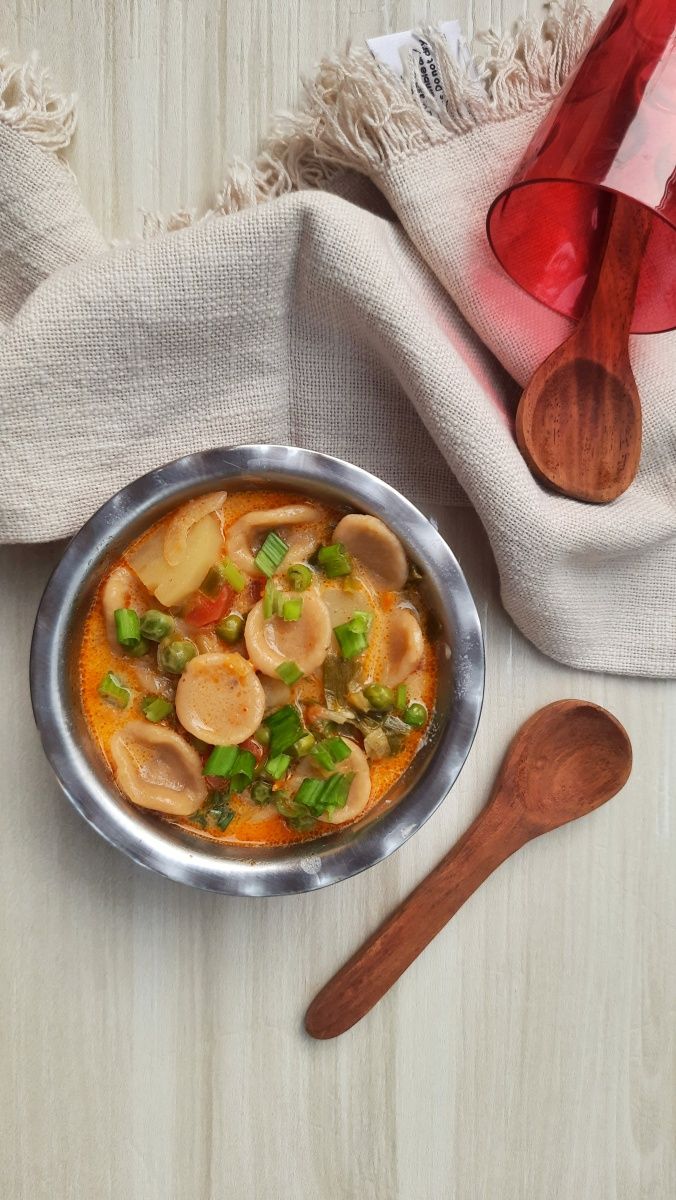
Butter Tea and the Poetics of Salt and Fat
Before I ever tasted Ladakh’s famous butter tea, I had heard the whispers. Travelers spoke of its shocking saltiness, of the buttery slick that clung to the lips, of the curious warmth it delivered on a freezing mountain morning. But no description could prepare me for the poetry contained in a single steaming cup of po cha.
In a small monastery near Hemis, perched like a dream against the sky, I watched a monk prepare the sacred brew. A long wooden churn, almost as tall as the man himself, stood beside the hearth. Into it he poured strong black tea, a slab of yak butter dense with the richness of pasture, and a heavy pinch of coarse Himalayan salt. With swift, practiced movements, he pumped the handle up and down, a slow rhythm that seemed to echo the heartbeat of the mountains themselves.
Butter tea is not an indulgence; it is survival in liquid form. In a place where winters can swallow villages whole, and the air steals moisture from your skin with every breath, the fat, salt, and heat of po cha offer something deeper than comfort — they offer endurance. To drink butter tea is to drink the wisdom of those who have lived at the roof of the world for centuries.
My first sip was a shock. The salt hit my tongue sharply, and the butter coated my mouth in a thick, oily film. I blinked, uncertain. But as the tea traveled down, a profound warmth spread from my throat to my fingertips, and a slow, grounding energy filled my chest. Outside the monastery walls, the wind howled like a restless spirit, but inside, with the clay cup cradled in both hands, I felt protected, almost blessed.
In Ladakh, sharing butter tea is an act of hospitality and trust. Whether in a family home or a monastic gathering, a cup is offered as a bridge between worlds — between guest and host, between the living and the landscape. Refusing is unthinkable; accepting is an embrace of the culture’s essence.
As I sat cross-legged on the woven mats, refilled again and again by smiling monks, I realized that butter tea is not just a drink. It is a prayer — salty, rich, humble, and eternal. It speaks of a life lived close to the earth and closer still to the spirit of resilience that defines Ladakh.
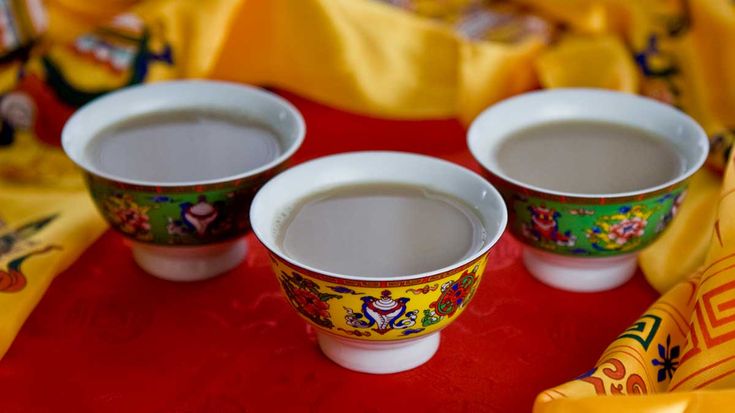
Apricots, Churpe, and the Art of Preservation
There is a certain elegance to survival at 3,500 meters above sea level. In Ladakh, where winter locks the land under a shroud of ice for months, preservation is not merely a skill — it is an art form, crafted with wisdom and patience. Nowhere is this art more deliciously evident than in the region’s dried fruits and cheeses, the quiet treasures of Himalayan homes.
In the village of Skurbuchan, I was welcomed into a sun-warmed courtyard where apricots — Ladakh’s golden gems — were spread out to dry on woven mats. Their vivid orange hues glowed against the stark landscape, like small embers of summer defying the coming cold. A woman in a blue goncha offered me a handful, their skins wrinkled, their sweetness intensified by the sun. With one bite, I tasted not just fruit, but the memory of a season.
Apricots in Ladakh are more than a fruit; they are a legacy. Introduced centuries ago via ancient trade routes, they have become an essential thread in the region’s agricultural and cultural tapestry. Every family tends a few apricot trees, and every summer, a flurry of harvesting, slicing, and sun-drying fills the villages with a heady, honeyed aroma. The apricots are then stored carefully for winter, offering bursts of sweetness when the land lies barren and white.
Yet apricots are only part of the preservation story. Tucked into the corners of kitchen shelves, alongside bundles of dried greens and barley flour, sit small, rock-hard nuggets of churpe — the legendary dried yak cheese of the Himalayas. Made by fermenting buttermilk and then drying it over many weeks, churpe is Ladakh’s answer to the question of how to store protein without refrigeration. It is tough, tangy, and built to endure journeys across snowy passes and months of isolation.
The first time I attempted to chew a piece of churpe, I thought it might break my teeth. A kind elder laughed and advised me to tuck it into my cheek and let it soften slowly — a Himalayan version of slow food, one might say. Hours later, the cheese had melted into a rich, savory cream, releasing a flavor so earthy and primal that it felt almost sacred.
In Ladakh, preservation is not about conquering nature; it is about collaborating with it. By drying, fermenting, and honoring the gifts of short summers, the people here weave resilience into every meal. Each apricot and each pebble of churpe is a small, stubborn triumph over the elements, a testament to a culture that survives not by abundance, but by reverence.
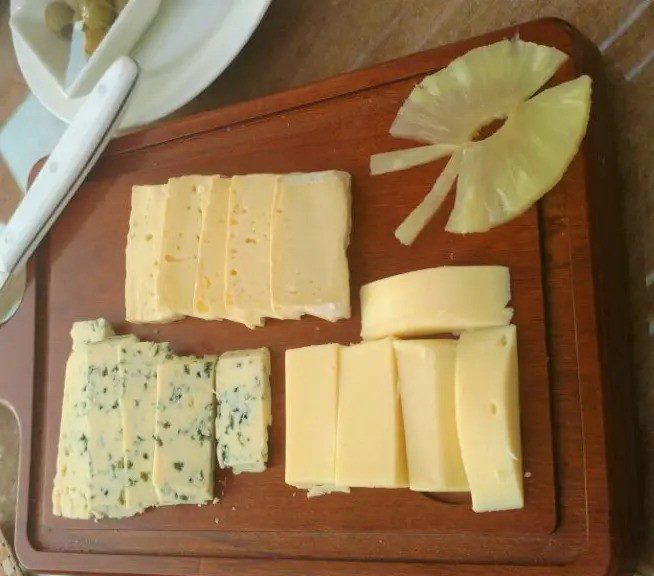
Fermented Joy – Chang and Celebration
There are few sounds in Ladakh more heartwarming than the laughter that bubbles up during a festival — except, perhaps, the soft clinking of clay cups filled with chang, the region’s beloved barley beer. In the dry, thin air where the mountains seem to scrape the heavens, celebration here is not a spectacle; it is an intimate, communal joy stitched together with ancient flavors and shared spirits.
I found myself amidst such a celebration one afternoon in a village near Alchi, drawn by the sound of drums and the rich colors of swirling robes. It was the harvest festival, a time when the hard work of the growing season is honored with dance, music, and of course, generous pours of chang. Crafted by fermenting local barley with yeasts nurtured over generations, chang is a drink of the earth — humble, nourishing, and alive with tradition.
As I was handed a warm, slightly rough clay cup filled to the brim, I hesitated for a moment. The liquid inside was cloudy, with a yeasty aroma that spoke of long winter nights and hearths glowing with amber light. One sip, and I understood: chang is not just a beverage; it is a memory in the making. It carries with it the scent of harvested fields, the laughter of neighbors, and the grateful sigh of a land breathing out after months of labor.
Unlike the hurried revelry of more modern festivals, Ladakh’s gatherings move at the pace of nature itself — slow, thoughtful, deeply rooted. Around me, old women clinked cups and sang ballads of lost loves and heroic journeys; children darted between clusters of dancers, sticky with apricot jam; monks in crimson robes smiled quietly from shaded corners. Food flowed easily: plates of skyur (fermented yogurt), roasted barley cakes, and dried fruits, all prepared in honor of the earth’s generosity.
Chang, much like the festivals it graces, is a ritual of connection. To drink it is to acknowledge the interconnectedness of the people, the fields, the mountains, and the seasons. Every cup is an offering, every sip a silent prayer — gratitude for survival, joy in community, and reverence for the land that makes it all possible.
As the sun dipped behind the jagged peaks and the sky flushed pink and gold, I raised my cup once more, feeling the deep hum of the drums echoing in my bones. In that fleeting moment, with chang on my tongue and the spirit of Ladakh in the air, I knew I was part of something timeless — a celebration not just of harvest, but of life itself.

Where to Taste the Real Ladakh (Without a Restaurant Menu)
To taste Ladakh is to wander beyond the polished cafés of Leh, beyond the laminated menus promising momo and thukpa. True flavor — the kind that lingers in the heart long after it has left the tongue — waits in the stone kitchens of villages, in the warmth of family courtyards, in the rhythm of daily life untouched by tourist gloss.
If you wish to savor Ladakh’s soul, forget the restaurant guide. Instead, step into the woven world of village homestays and community meals. In villages like Shyok, Uleytokpo, and Hemis Shukpachan, families open their homes to travelers not merely for profit, but to share the living heritage of the land. Here, food is not plated for aesthetics; it is ladled into simple bowls, hearty, seasonal, and alive with meaning.
One evening in Sham Valley, I sat cross-legged in a family’s kitchen as the matriarch stirred a bubbling pot of chutagi — Ladakh’s beloved bow-tie pasta soup — using a ladle older than most of the surrounding houses. No English was spoken, yet everything was understood. A smile, a gesture, the offering of a steaming bowl — these were the languages of hospitality. The vegetables in the soup had been plucked from their own dusty garden, the barley had been ground by hand, and the water drawn from the village spring. Every mouthful was a story, each flavor a testament to labor, landscape, and love.
Beyond the meals themselves, the act of eating in these homes draws you closer to the rhythm of Ladakhi life. In the early mornings, you may join in the milking of dzos or watch apricots being sun-dried on rooftops. Children tumble into the kitchens after school, cheeks flushed with mountain air, eager for a taste of fresh buckwheat bread. Elderly grandmothers, wrapped in handspun wool, sip butter tea with a patience born of hard winters and generous hearts.
For those wishing to weave food into their journey, seeking out a Ladakh food tour or arranging a village homestay offers an experience no restaurant could ever replicate. Tours that emphasize local immersion often include visits to small farms, bread-baking sessions, or even a chance to try your hand at making skyu under the watchful eye of a seasoned cook. It is less about culinary perfection and more about entering into the slow, sacred dance between land and table.
So leave behind the laminated menus and curated food experiences. In Ladakh, the truest flavors are the ones you stumble upon — in a steaming bowl of barley stew shared under a sky ablaze with stars, or a crust of buckwheat bread still warm from the hearth. Here, taste is a journey, and every meal an invitation to belong.
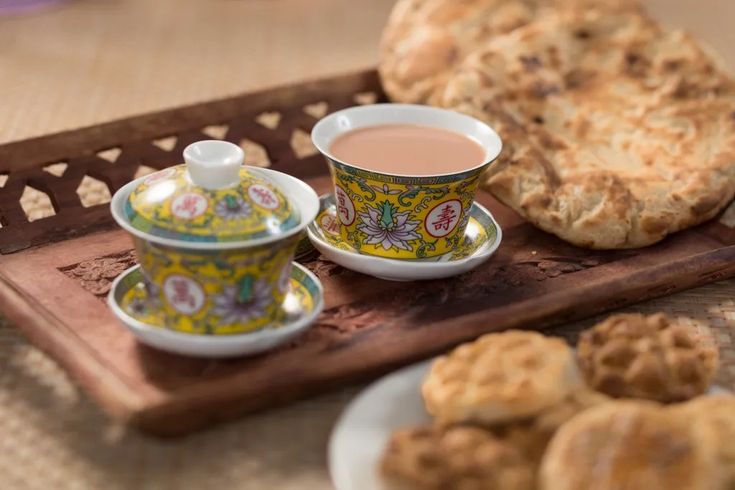
Conclusion – Taste as Memory, Taste as Map
Long after the winding roads of Ladakh faded behind me, long after the prayer flags and stone houses were memories softened by time, it was the taste that remained. A sip of salty butter tea conjured the flicker of hearth fires. The tang of churpe called back the laughter of harvest celebrations. A mouthful of sun-dried apricot brought with it the golden hush of autumn afternoons. In Ladakh, food is not just sustenance; it is a map of memory, etched onto the heart with every shared meal and every patient preparation.
As travelers, we often chase the spectacular — the soaring peaks, the grand monasteries, the vast silence of deserts. But to truly know a place, one must lean closer, taste deeper. The flavors of Ladakh tell the story of a people who have lived at the edge of the world, who have learned to weave resilience and gratitude into every seed sown and every dish served.
Food in Ladakh is storytelling made tangible. Each bowl of skyu recounts centuries of survival and community. Each sip of po cha carries the whispered prayers of monks and mothers alike. To partake in these traditions is to enter a conversation that began long before us and will continue long after we have gone — a conversation between land, spirit, and those humble enough to listen.
For those who seek authentic encounters, Ladakh’s culinary heritage offers a rare invitation. It is not dressed in luxury nor diluted for convenience. It demands patience, respect, and openness — but what it gives in return is profound. It gives you belonging. To eat here is to be folded, briefly and tenderly, into a way of life shaped by sun, stone, and snow.
As you plan your journey to this rooftop of the world, I invite you to go beyond sightseeing. Taste the barley threshed by calloused hands. Share butter tea in a kitchen warmed by ancient songs. Accept the plate of apricots offered with a nod and a smile. In these small, intimate acts, you will find the real Ladakh — not just in the photographs you take, but in the living, breathing stories you carry home within you.
In Ladakh, memory is made not with the eyes, but with the mouth — and with the heart wide open.
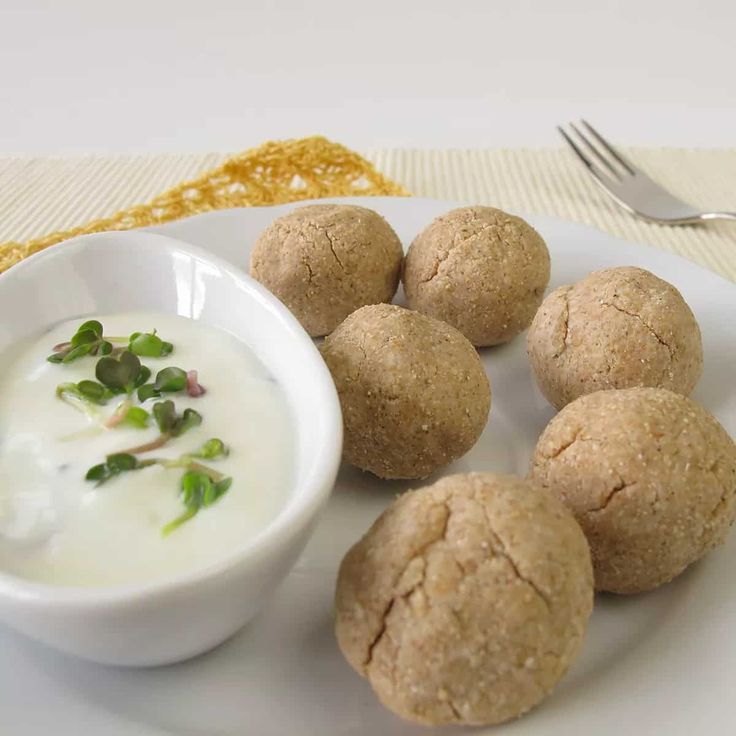
About the Author
Elena Marlowe is an Irish-born writer currently residing in a quiet village near Lake Bled, Slovenia.
Passionate about capturing the subtle poetry of landscapes, cultures, and everyday life, Elena has spent the past decade weaving immersive travel narratives that invite readers to experience the world with both curiosity and heart.
Her journeys often focus on lesser-known corners of Europe and Asia, where tradition and simplicity offer a deeper story. From the soaring monasteries of Ladakh to the misty shores of the Adriatic, she seeks the moments where food, culture, and humanity meet.
When she is not traveling, Elena enjoys long walks through Alpine forests, tending to her small herb garden, and sipping tea while dreaming of her next journey.

